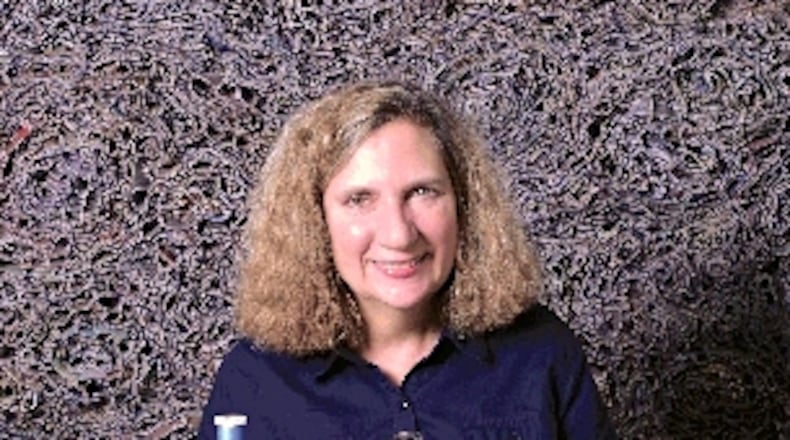Cooke turned the setback to creativity, the result of which is “Unearthing: Searching Through Strata,” an exhibition of the 20-year journey that helped the process artist use complex and highly-organized textile constructions for her works on display at the SMOA’s Deer Gallery.
Cooke will attend an opening reception at 5:30 p.m. Friday, May 30 at the SMOA, 107 Cliff Park Road. The public is welcome to attend.
“As the 20-year anniversary of Hurricane Katrina approaches I am once again drawn into revisiting my own experience and that of the Gulf Coast,” said Cooke. “It remains the third deadliest and perhaps costliest disaster in our history with almost 2,000 people losing their lives and around 400,000 people left homeless.”
A clay artist for 30 years before Katrina, Cooke made functional pottery and sculpture using different kinds of clay and forming and firing methods. After several part-time college teaching, she was drawn back to New Orleans and its “vibe, its joyful culture,” meeting her husband and continuing to make ceramic sculpture and pottery and teaching classes at her studio.
Then Katrina hit. Cooke and family bounced between Birmingham, Ala. and Ithica, N.Y. before what she called an arduous 2.5-year recovery. Her studio was soaked in three feet of water for over a month in 95-degree Louisiana heat.
“I can’t begin to describe the smell that was a combination of rotting vegetation, smoke and decomposing mammals,” Cooke said. “We worked harder physically than I had ever in my life and by the time things were finished enough for us to live and work there, I decided to not rebuild my clay studio. I just didn’t have the heart to do it after how hard it had been to salvage work and clean it up.”
Cooke considered working with clay again, missing the connection with the earth and the particular studio rhythm. But the cleanup process, with mud slippery as ice, turned her off the process.
Fate had another idea. Although she disliked sewing, an inherited sewing machine from an aunt, a 1950s Singer Featherweight that survived in a closet turned her artistic aspirations into creating thickly-wrought sculptural wall pieces.
“My work has taken many twists and turns in the last 15 years as I have explored different ideas,” she said.
According to Cooke, process art generally means that the artist is more focused and interested in the way the art is produced, the journey towards completion of a work rather than perhaps having a specific meaning as that was determined before even beginning the work.
“What I often do say, is that I attempt to extract meaning from the process itself. I don’t necessarily look at the process involved as being of ‘more’ importance than the idea,” she said.
Cooke noticed that the act of manipulating the material can reflect what the final piece is about and what she was actually attempting to express in the work: That it can be a metaphor for the human experience.
One of her first post-Katrina pieces involved painting a large canvas with color and texture, front and back, finishing it and then ripping it all apart, folding, cutting, fraying edges, sewing and creating something completely new, which she said perfectly expressed what had happened to people after Katrina.
“I often have a vision but not an exact plan in the way that an architect does. While the vision is there, I am open and often actually invite taking different possible directions where new decisions and adjustments have to be made,” said Cooke.
Cooke’s family moved to Springfield when she was in elementary school and she graduated from North High School in 1973. She took pottery classes at the Springfield Art Center, the SMOA’s former name, which she loved and led to a summer art camp for high school students at the University of Kansas in Lawrence, Kansas during high school.
Her first art sale was a painting to two of her teachers at North for $50. She described the painting as full of teenage angst inspired by “The Scream” by Edvard Munch and painted in oil on wood.
Now she’s come full-circle. Cooke has stopped in at the now SMOA on recent visits and was struck by how beautifully it had been added onto and renovated.
At the reception, she expects high school classmates, Ohio-based cousins, related family and a artists she went to school with in New Orleans who have moved here.
“I am so happy to be having an exhibition there,” said Cooke.
MORE DETAILS
The exhibition will be up through March 1, 2026. It will be open museum hours, 9 a.m. to 5 p.m. Wednesday through Saturdays and 12:30-4:30 p.m. Sundays. For more information, go to www.springfieldart.net.
About the Author
